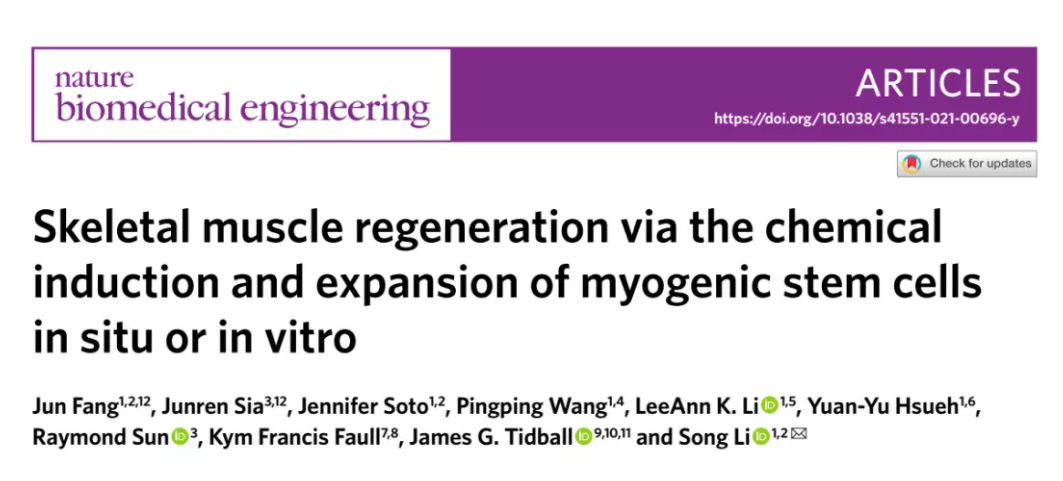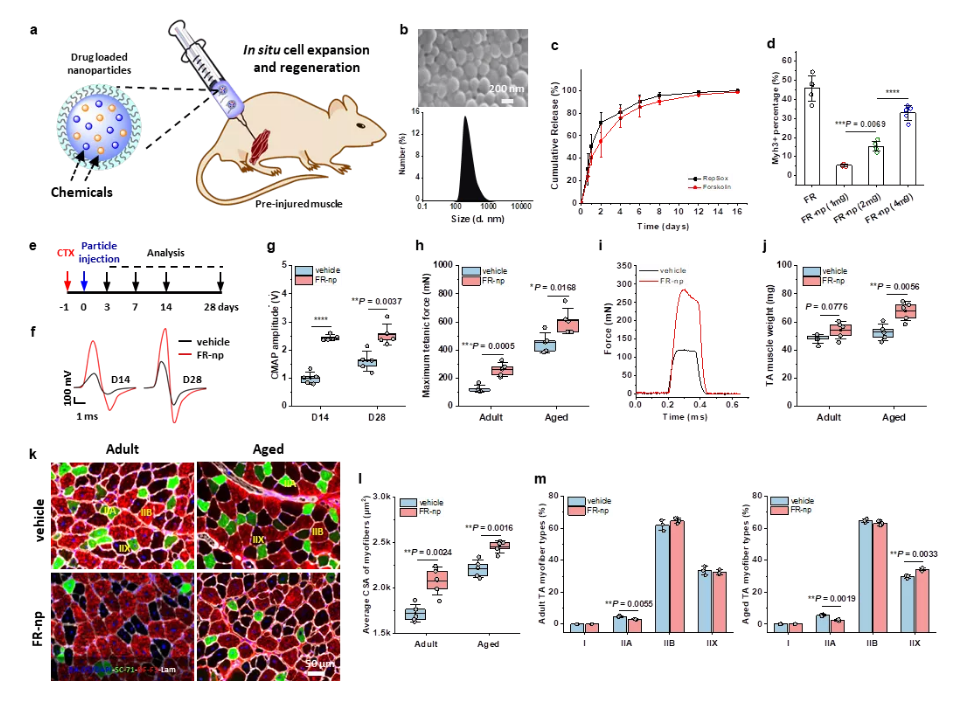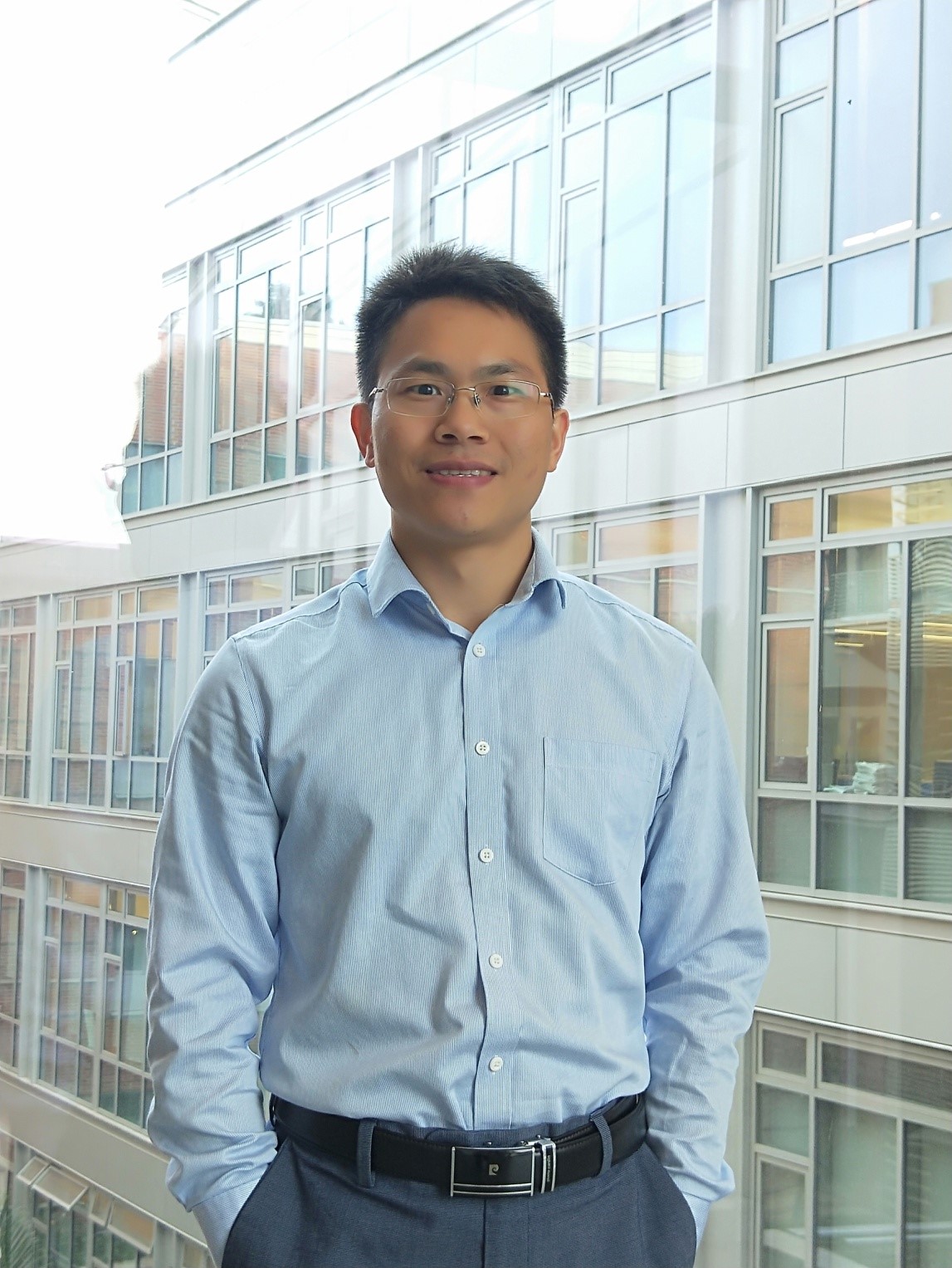


Team led by Song Li discovered small-molecule drug combination induced amplification of stem cells in situ to promote muscle repair in vitro
March 22, 2021

Recently, the team led by Song Li, UCLA, published their research work entitled “Skeletal muscle regeneration via the chemical induction and expansion of myogenic stem cells in situ or in vitro” in the journal Nature Biomedical Engineering. Jun Fang was the co-author of this paper.
Skeletal muscle is the most abundant tissue in the human body and has numerous physiological functions that extend beyond locomotion to other diverse vital roles, including signal transduction1. After an injury, the ability of skeletal muscles to regenerate depends on resident myogenic stem cells, such as satellite cells, which are localized beneath the basal lamina of myofibres and express the paired-box transcription factor Pax7 . Quiescent satellite cells are activated after muscle injury to divide, differentiate and repair the damaged tissue. However, this regeneration ability is compromised by severe acute muscle loss after traffic accidents, blast injuries, combat injuries and surgical resections, or by progressive muscle loss with aging atrophy and inherited genetic diseases such as Duchenne muscular dystrophy (DMD), resulting in disability and poor quality of life.
Muscle stem-cell-based therapies provide promising strategies for improving skeletal muscle regeneration. However, the regenerative potential of muscle is limited by the paucity of autologous muscle stem cells and the need for concomitant immunosuppression of allogeneic cells. Furthermore, in vitro expansion of muscle stem cell populations is time-consuming and expensive, and the cells have diminished efficacy for engraftment. Thus, the scarcity of cell sourcing and the lack of an effective method to expand myogenic stem cells are major challenges to using this approach for skeletal muscle regeneration.

Figure 2 In vivo engraftment of CiMCs promotes muscle regeneration.
Their study showed that myogenic stem cells (predominantly Pax7+ cells)—which were selectively expanded from readily obtainable dermal fibroblasts or skeletal muscle stem cells using a specific cocktail of small molecules and transplanted into muscle injuries in adult, aged or dystrophic mice—led to functional muscle regeneration in the three animal models. They also show that sustained release of the small-molecule cocktail in situ through polymer nanoparticles led to muscle repair by inducing robust activation and expansion of resident satellite cells. Chemically induced stem cell expansion in vitro and in situ may prove to be advantageous for stem cell therapies that aim to regenerate skeletal muscle and other tissues.
Professor Song li, the dean of Department of Bioengineering, University of California, was the corresponding author of the study. In recent years, he has been engaged in the research of cell engineering, biomaterials, regeneration engineering and immune engineering. Dr. Jun Fang and Dr. Junren Sia were co-first authors of this study.
Original paper link: https://dx.doi.org/10.1038/s41551-021-00696-y

Dr. Fang Jun is a postdoctoral fellow and a assistant project scientist in Professor Song Li 's team at University of California, Los Angeles. Dr. Fang Jun will join the School of Biomedical Engineering of Shanghai Jiao Tong University as an permanent associate professor (doctoral supervisor) on a full-time basis in June 2021. Dr. Fang Jun's personal website: https://www.junfanglab.com/